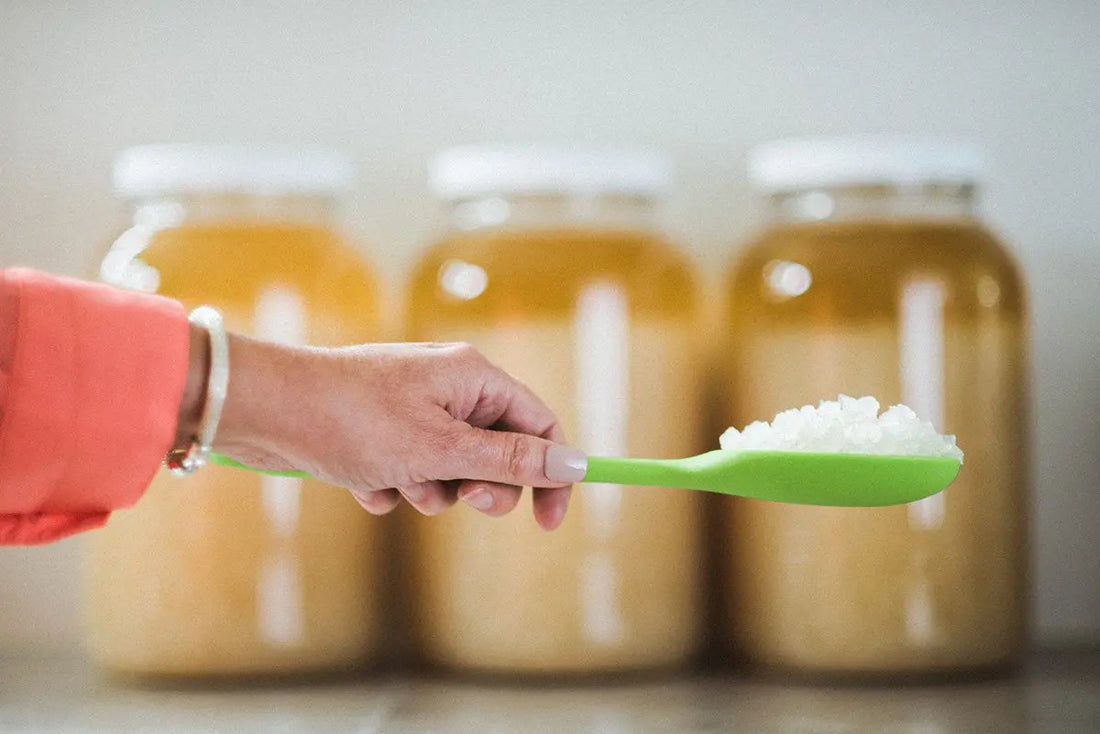
How To Know If Your Water Kefir Grains Are Dead
Share
As long as you can still visibly see your water kefir grains they are alive! They’re a living culture of good bacteria and yeast and they’ve been around for centuries. These jelly-like grains are survivors, but they sometimes have troubles and here are the most common problems you may face when you brew water kefir.
How to Keep Your Water Kefir Grains Alive and Healthy
#1 Too Hot, Too Cold
Temperature is a large factor in getting the water kefir grains to ferment. They need to be kept consistently warm and there are numerous tips in my post about 10 Ways to Keep Your Ferments Warm in Winter.
Something that you need to know as well, is that if you live in a cooler climate, water kefir grains struggle in the winter and don’t multiply as profusely and aren’t as plump as they are in the summer. Don’t worry, it isn’t a YOU problem, the grains don’t like the cold. You will see that your kefir grains will be continuously morphing themselves from season to season and year to year. They may not multiply as much but they will still make wonderful, probiotic rich water kefir.
I strongly suggest that you leave your first ferment for 48 hours instead of 24 in the winter. That way more sugar gets eaten up and the fizz builds better.
#2 Getting Used to Their New Conditions
The second common problem is that the grains need a chance to acclimatize to their new water. You need to follow the exact same process and use the exact same ingredients, two to three times before the grains will begin to fully produce. Changing the variables like the types of sugar or the amount of sugar confuses the grains, so be prepared for almost no action the first couple of times, when you change things. The bottom line is that whatever you do, keep it consistent.
#3 The Second Ferment is When the Fizz Happens
Carbonation builds when the swivel top bottle is fully sealed. CO2 builds up as the grains eat the sugars and this creates the fizz. Always do the second ferment, even if you are questioning if the fermentation is working or not. The first ferment doesn’t produce fizz.
We suggest using pineapple juice for your second ferment on your first few attempts. Water kefir loves the sugars in pineapple juice and it makes a very fizzy drink.
We strongly suggest that once your grains are acclimatized, you don’t use pineapple juice in your second ferment because it makes the drink too fizzy and opening the flip top bottle after the second ferment is too unpredictable.
RECAP:
Keep the first and second ferment consistently warm, don’t change your variables and always do a second ferment.
TIPS:
Putting grains into dormancy: The beauty of water kefir is that you can stop and start at any time. The best way to put your grains into dormancy is to put them into plain water in your first ferment jar in the fridge. That way they will get good and hungry and will be raring to produce when you are ready to start again. They can sit in the fridge for up to three months.
Size really doesn’t matter: Kefir grains can grow to be quite large, however that does not mean that they are better. In fact, when the grains are smaller, there is more surface area involved which can produce a better kefir (they also tend to multiply more when they’re a smaller size).
